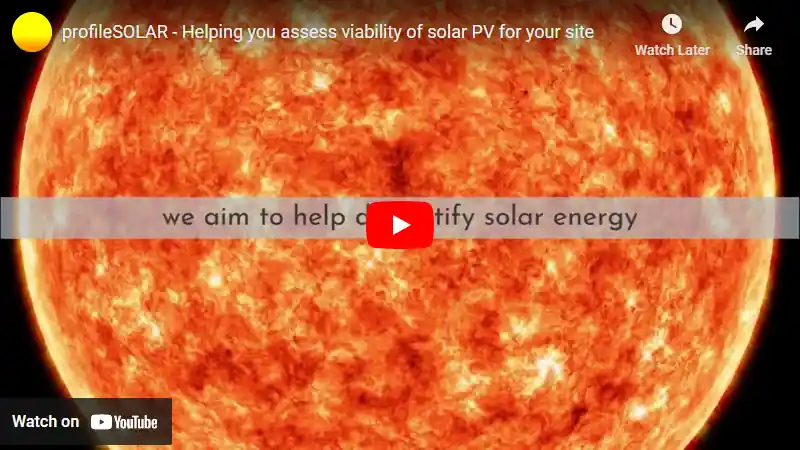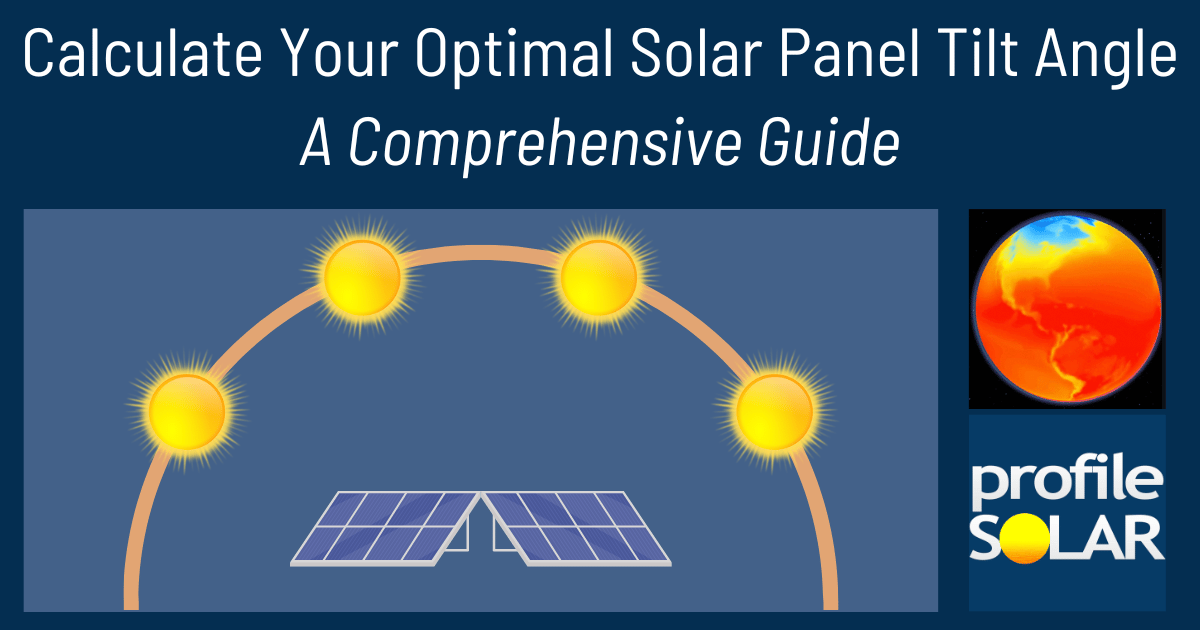

The location in Richmond, New South Wales, Australia is pretty good for generating energy through solar panels all year round. In simple terms, the amount of sunlight that hits your solar panel determines how much energy you can produce. The more sunlight, the more energy.
In this area, during summer you can expect to generate about 6.48 units of electricity per day for every unit of solar panel installed. This decreases to around 4.42 units in autumn and further drops down to 3.28 units in winter due to shorter days and less intense sunlight. But it increases again in spring up to around 5.75 units as the days get longer.
The best time of year for generating solar power at this location would be summer because it has the longest days and most intense sun - so your panels will be getting a lot of light and producing lots of power.
For fixed panel installations at this location, tilting your panels at an angle of 30 degrees facing North will give you maximum total production from your solar panels throughout the year because they'll be hitting direct sunlight most effectively.
As far as environmental or local factors that could affect solar production here - there might not be any significant ones but things like large trees or buildings casting shadows on your panels could reduce their efficiency by blocking out some light; if these are present then trimming trees or repositioning structures might help increase output.
Also keep in mind that weather conditions such as heavy rainfall or dust storms may temporarily reduce output but these are usually short-term issues; regular cleaning and maintenance can help ensure optimal performance from your panels despite these challenges.
Note: The Southern Sub Tropics extend from -23.5° latitude South down to -35° latitude.
So far, we have conducted calculations to evaluate the solar photovoltaic (PV) potential in 492 locations across Australia. This analysis provides insights into each city/location's potential for harnessing solar energy through PV installations.
Link: Solar PV potential in Australia by location
Solar output per kW of installed solar PV by season in Richmond
Seasonal solar PV output for Latitude: -33.595509, Longitude: 150.7479461 (Richmond, Australia), based on our analysis of 8760 hourly intervals of solar and meteorological data (one whole year) retrieved for that set of coordinates/location from NASA POWER (The Prediction of Worldwide Energy Resources) API:




Ideally tilt fixed solar panels 30° North in Richmond, Australia
To maximize your solar PV system's energy output in Richmond, Australia (Lat/Long -33.595509, 150.7479461) throughout the year, you should tilt your panels at an angle of 30° North for fixed panel installations.
As the Earth revolves around the Sun each year, the maximum angle of elevation of the Sun varies by +/- 23.45 degrees from its equinox elevation angle for a particular latitude. Finding the exact optimal angle to maximise solar PV production throughout the year can be challenging, but with careful consideration of historical solar energy and meteorological data for a certain location, it can be done precisely.
We use our own calculation, which incorporates NASA solar and meteorological data for the exact Lat/Long coordinates, to determine the ideal tilt angle of a solar panel that will yield maximum annual solar output. We calculate the optimal angle for each day of the year, taking into account its contribution to the yearly total PV potential at that specific location.

Seasonally adjusted solar panel tilt angles for Richmond, Australia
If you can adjust the tilt angle of your solar PV panels, please refer to the seasonal tilt angles below for optimal solar energy production in Richmond, Australia. As mentioned earlier, for fixed-panel solar PV installations, it is optimal to maintain a 30° North tilt angle throughout the year.
| Overall Best Summer Angle | Overall Best Autumn Angle | Overall Best Winter Angle | Overall Best Spring Angle |
|---|---|---|---|
| 17° North in Summer | 39° North in Autumn | 48° North in Winter | 28° North in Spring |
Our recommendations take into account more than just latitude and Earth's position in its elliptical orbit around the Sun. We also incorporate historical solar and meteorological data from NASA's Prediction of Worldwide Energy Resources (POWER) API to assign a weight to each ideal angle for each day based on its historical contribution to overall solar PV potential during a specific season.
This approach allows us to provide much more accurate recommendations than relying solely on latitude, as it considers unique weather conditions in different locations sharing the same latitude worldwide.
Calculate solar panel row spacing in Richmond, Australia
We've added a feature to calculate minimum solar panel row spacing by location. Enter your panel size and orientation below to get the minimum spacing in Richmond, Australia.
Our calculation method
- Solar Position:
We determine the Sun's position on the Winter solstice using the location's latitude and solar declination. - Shadow Projection:
We calculate the shadow length cast by panels using trigonometry, considering panel tilt and the Sun's elevation angle. - Minimum Spacing:
We add the shadow length to the horizontal space occupied by tilted panels.
This approach ensures maximum space efficiency while avoiding shading during critical times, as the Winter solstice represents the worst-case scenario for shadow length.
Topography for solar PV around Richmond, Australia
Richmond, Australia is located in the state of New South Wales and is part of the greater Sydney area. The topography around Richmond is characterized by relatively flat to gently rolling terrain. There are some hilly areas to the west and north, but much of the region consists of plains that are part of the Cumberland Plain and Hawkesbury River floodplain.
This area has a temperate climate with plenty of sunshine throughout the year, making it suitable for solar PV installations. Large-scale solar PV projects would be most suited in open, flat areas with minimal shading from trees or buildings.
In terms of specific locations nearby Richmond for large-scale solar PV:
1. Agnes Banks: This suburb just east of Richmond features mostly flat terrain and rural land use, which could potentially accommodate large-scale solar farms.
2. Castlereagh: Located north-east from Richmond, this area also offers open spaces that could be suitable for large-scale solar installations.
3. Mulgrave: South-east from Richmond, Mulgrave has industrial zones which may have rooftops suitable for commercial scale solar systems.
However, any plans for a large-scale project would need to consider other factors such as local zoning laws, proximity to power grid connections or substations and environmental impacts on local flora/fauna habitats or agricultural lands etc., before proceeding with installation.
Australia solar PV Stats as a country
Australia ranks 7th in the world for cumulative solar PV capacity, with 19,076 total MW's of solar PV installed. This means that 10.70% of Australia's total energy as a country comes from solar PV (that's 2nd in the world). Each year Australia is generating 742 Watts from solar PV per capita (Australia ranks 2nd in the world for solar PV Watts generated per capita). [source]
Are there incentives for businesses to install solar in Australia?
Yes, there are a variety of incentives available in Australia to businesses wanting to install solar energy. These include:
1. Renewable Energy Target (RET): The RET provides businesses with financial assistance for installing and operating renewable energy systems such as solar panels. Businesses may be eligible to receive certificates that can be sold or traded on the open market for additional income.
2. Feed-in Tariffs: Some states offer feed-in tariffs which pay businesses for generating and exporting excess electricity from their solar panel system back into the grid during peak demand periods.
3. Solar Credits: The Solar Credits program provides households and small business owners with an upfront discount when purchasing a new solar system, based on the amount of renewable energy generated by the system over its lifetime.
4. Tax Breaks: Small business owners may be able to claim tax deductions on certain expenses associated with installing a solar power system, including installation costs, maintenance expenses and interest payments related to financing arrangements taken out specifically for this purpose.
Do you have more up to date information than this on incentives towards solar PV projects in Australia? Please reach out to us and help us keep this information current. Thanks!
Citation Guide
Article Details for Citation
Author: Aaron Robinson
Publisher: profileSOLAR.com
First Published: Saturday 17th of February 2024
Last Updated: Wednesday 26th of June 2024
Tell Us About Your Work
We love seeing how our research helps others! If you've cited this article in your work, we'd be delighted to hear about it. Drop us a line via our Contact Us page or on X, to share where you've used our information - we may feature a link to your work on our site. This helps create a network of valuable resources for others in the solar energy community and helps us understand how our research is contributing to the field. Plus, we occasionally highlight exceptional works that reference our research on our social media channels.
Feeling generous?

Share this with your friends!


Compare this location to others worldwide for solar PV potential
The solar PV analyses available on our website, including this one, are offered as a free service to the global community. Our aim is to provide education and aid informed decision-making regarding solar PV installations.
However, please note that these analyses are general guidance and may not meet specific project requirements. For in-depth, tailored forecasts and analysis crucial for feasibility studies or when pursuing maximum ROI from your solar projects, feel free to contact us; we offer comprehensive consulting services expressly for this purpose.
Helping you assess viability of solar PV for your site
Calculate Your Optimal Solar Panel Tilt Angle: A Comprehensive Guide
Enhance your solar panel's performance with our in-depth guide. Determine the best tilt angle using hard data, debunk common misunderstandings, and gain insight into how your specific location affects solar energy production.

.svg)





